Best Practices for Call Center Monitoring Software Success
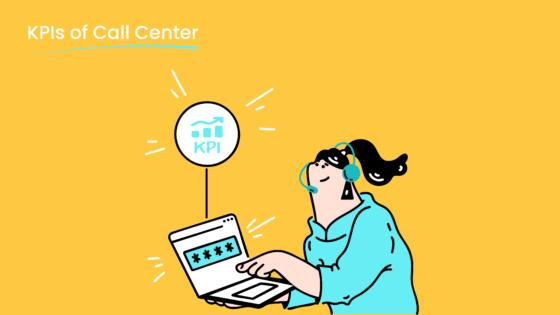

Call center monitoring plays a vital role in improving how your business interacts with customers. By using the best call center monitoring software, you can track key metrics like call volume and customer satisfaction. Monitoring tools also automate repetitive tasks, allowing agents to focus on meaningful conversations. These features help you deliver better service and make informed decisions based on data-driven reports. With solutions like Sobot, you can integrate monitoring systems with other tools, giving you a complete view of customer interactions and ensuring operational efficiency.
Key Benefits of Call Center Monitoring Software

Enhancing Customer Satisfaction Through Monitoring
Call center monitoring helps you deliver exceptional service by identifying areas for improvement. By analyzing customer interactions, you can uncover patterns that affect satisfaction. For example:
- A Berlin-based healthcare consultant improved patient coordination through inbound call center support, leading to higher customer satisfaction.
- A UK motorcycle insurance company increased service quality from 30% to 90% using effective monitoring practices.
Regular data analysis also plays a key role. Reviewing metrics like call quality and customer feedback monthly or quarterly helps you spot trends and address issues proactively. This ensures your customers feel valued and heard, boosting their overall experience.
Boosting Agent Performance with Real-Time Feedback
Real-time feedback empowers your agents to improve continuously. Monitoring individual performance reveals areas where agents may need support. For instance, agents with lower booking rates might struggle with soft skills. Immediate feedback allows them to address these gaps quickly.
Supervisors can use real-time metrics like average call length and call quality to identify coaching opportunities. Speech analytics further enhance this process by providing tailored insights. When agents receive instant feedback, they can adjust their approach during calls, leading to better productivity and customer satisfaction.
Driving Operational Efficiency with Data Insights
Data insights from call center monitoring streamline your operations. Metrics like Average Handle Time (AHT) and First-Call Resolution (FCR) highlight efficiency levels. Shorter AHTs indicate well-trained agents who handle inquiries effectively. Improving FCR reduces call transfers, ensuring customers get solutions faster.
These insights also help you allocate resources better. By understanding peak call times and agent performance, you can optimize schedules and reduce downtime. This not only saves costs but also enhances the overall efficiency of your call center.
Supporting Strategic Decisions with Analytics
Call center analytics provide valuable insights that help you make informed strategic decisions. By analyzing data from your call center monitoring tools, you can identify trends, predict customer behavior, and optimize operations. These insights allow you to align your strategies with customer needs and business goals.
One way analytics support decision-making is through predictive modeling. For example, predictive customer behavior modeling anticipates customer needs, enabling you to tailor interactions. Machine learning enhances call routing, as seen in Capital One, where resolution rates increased by 15%. Predictive NPS models identify customer experience issues before survey results, improving satisfaction at companies like T-Mobile.
| Strategy | Outcome |
|---|---|
| Predictive Customer Behavior Modeling | Anticipates customer needs, tailoring interactions accordingly. |
| Machine Learning for Call Routing | 15% increase in resolution rates reported by Capital One. |
| Predictive NPS Model | Identifies customer experience issues before survey results, improving satisfaction at T-Mobile. |
Real-time performance dashboards also play a crucial role. They allow you to adjust staffing and strategies immediately based on current data. Automated quality scoring identifies areas where agents need coaching or training. Prescriptive analytics go a step further by suggesting specific actions to address identified issues. These tools ensure your decisions are backed by actionable insights.
By leveraging analytics, you can enhance quality assurance processes and improve customer satisfaction. Monitoring metrics like call quality and agent performance helps you refine your strategies continuously. This data-driven approach ensures your call center operates efficiently while meeting customer expectations.
Tips for Implementing Call Center Monitoring Software Effectively
Establish Clear Objectives and KPIs
Setting clear objectives and key performance indicators (KPIs) is the foundation of a successful call center monitoring strategy. Without defined goals, it becomes challenging to measure progress or identify areas for improvement. Start by determining what you want to achieve with your monitoring efforts. Are you aiming to improve customer satisfaction, reduce call handling times, or enhance agent performance?
Once your objectives are clear, align them with measurable KPIs. For example:
| KPI | Customer Impact | Operational Impact | Recommended Target |
|---|---|---|---|
| First Call Resolution (FCR) | Improves satisfaction by resolving issues on the first attempt | Reduces repeat calls | >75% |
| Average Handle Time (AHT) | Balances efficiency and service quality | Impacts staffing and resource needs | 5-7 minutes (industry-dependent) |
| Customer Satisfaction (CSAT) | Directly measures customer experience | Indicates service quality | >85% |
| Average Wait Time | Shapes the first impression | Reduces abandonment rates | <60 seconds |
| Call Abandonment Rate | Highlights customer frustration | Represents lost opportunities | <5% |
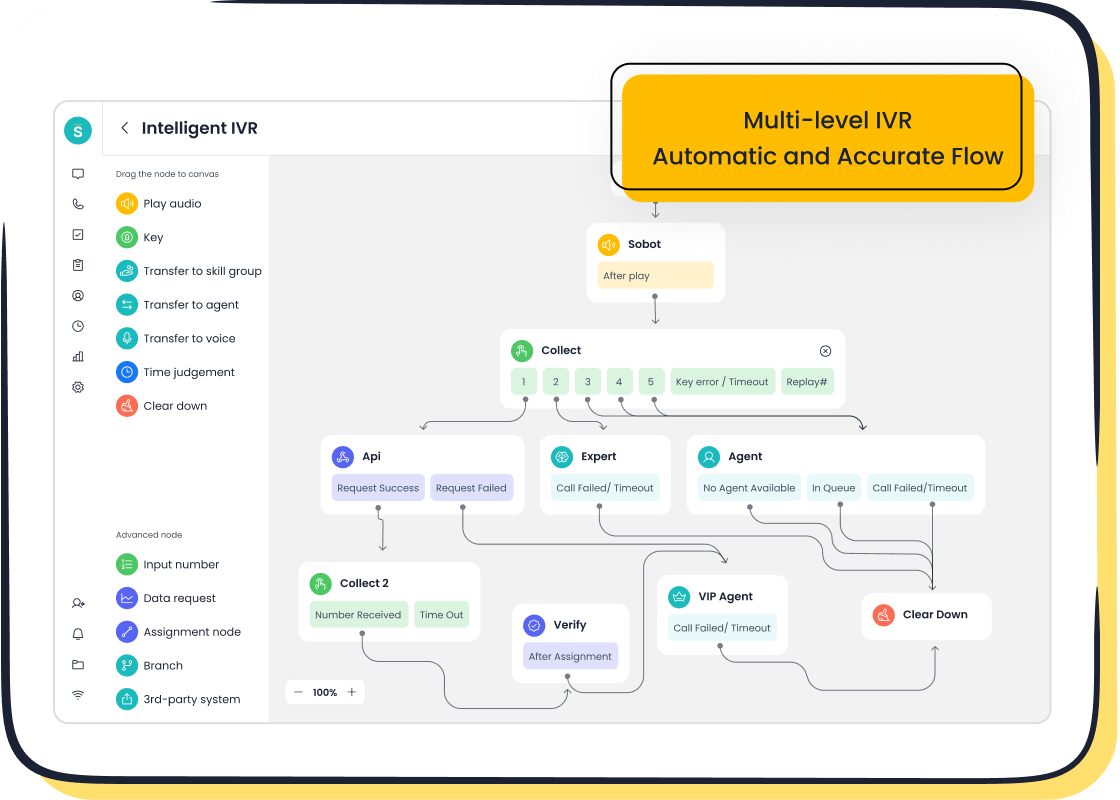
These KPIs provide actionable insights into your call center's performance. Tools like Sobot's Voice/Call Center can help you track these metrics in real-time, ensuring you stay on top of your goals.
Select the Best Call Center Monitoring Software for Your Needs
Choosing the right software is critical for effective monitoring. The ideal solution should align with your business needs and offer features that enhance both agent performance and customer interactions. Consider the following criteria when evaluating call monitoring tools:
| Criteria | Description |
|---|---|
| Real-Time Call Monitoring | Enables managers to assess ongoing calls and provide immediate support. |
| Call Recording and Evaluation | Allows review of past interactions for quality assurance and training. |
| Silent Listening and Coaching | Lets supervisors guide agents during calls without customer awareness. |
| Performance Metrics and Analytics | Tracks key metrics to identify trends and improve decision-making. |
| Call Scoring and Evaluation Forms | Provides structured feedback to agents based on predefined criteria. |
| Compliance Monitoring | Ensures adherence to legal and industry standards, especially in regulated sectors. |

Sobot's Voice/Call Center offers many of these features, including real-time monitoring, call recording, and advanced analytics. Its seamless integration with CRM systems ensures a unified workspace for agents, enhancing efficiency and productivity. With a 99.99% system uptime, Sobot guarantees reliable performance, making it a trusted choice for businesses worldwide.
Engage Agents in the Monitoring Process
Involving agents in the quality monitoring process fosters a sense of ownership and encourages collaboration. When agents feel included, they are more likely to embrace feedback and strive for improvement. Here are some tips to engage your team effectively:
- Involve agents in creating evaluation criteria and forms. This ensures the monitoring process feels fair and transparent.
- Appoint agents to a system review sub-team to gather feedback on the quality monitoring program.
- Schedule benchmarking sessions with other call centers to exchange insights and adopt best practices.
Research from SQM Group shows that 60% of call centers evaluate five or more calls per agent each month, while 71% coach agents on four or more evaluated calls. This approach ensures agents receive constructive feedback regularly, helping them refine their skills.
Sobot's monitoring tools, such as real-time feedback and performance dashboards, empower agents to track their progress and identify areas for growth. By providing actionable insights, these tools help agents improve their performance while enhancing the overall quality of customer interactions.
Align Software Features with Business Goals
Aligning the features of your call center monitoring software with your business goals ensures you achieve meaningful outcomes. Start by identifying your strategic objectives. For example, if your goal is to improve customer satisfaction, focus on features like real-time feedback and call quality monitoring. These tools provide actionable insights that help agents address customer concerns effectively.
Smarter KPIs also play a crucial role in aligning software capabilities with your goals. Companies that enhance their KPIs with AI are three times more likely to achieve significant financial benefits. By prioritizing outcomes and empowering agents, you can boost customer satisfaction and drive better results.
| Alignment Strategy | Outcome |
|---|---|
| Prioritizing Outcomes | Enhanced customer satisfaction and business results |
| Empowering Agents | Improved agent performance and customer interactions |
| Smarter KPIs | Better operational and financial outcomes |
Sobot's Voice/Call Center offers features like intelligent IVR and AI-powered voicebots, which align seamlessly with business objectives. These tools not only improve operational efficiency but also enhance the quality of customer interactions. By leveraging such advanced features, you can ensure your software supports your long-term goals effectively.
Provide Training for Agents and Managers
Training is essential for maximizing the benefits of your call center monitoring tools. A well-trained team understands how to use the software effectively, leading to better performance and customer satisfaction. Blended learning, which combines classroom sessions with digital tools, is a proven method for training agents and managers. Incorporating VR and AR simulations can also provide realistic scenarios, helping agents practice handling complex customer interactions.
Tailored training based on individual performance ensures each agent receives the support they need. Real-time analytics can guide immediate adjustments, making the learning process more dynamic. For example, AI-driven feedback helps agents refine their skills during live calls.
| Benefit | Statistic |
|---|---|
| Customer Satisfaction Improvement | 62% increase in customer satisfaction scores due to agent satisfaction |
| Efficiency Boost | 56% increase in efficiency with satisfied agents |
| Agent Retention Improvement | 39% improvement in agent retention |
Sobot supports continuous learning through features like performance dashboards and real-time monitoring. These tools provide valuable insights into agent performance, enabling managers to offer targeted coaching. By fostering a culture of continuous improvement, you can ensure your team stays ahead in delivering exceptional service.
Best Practices for Call Center Call Monitoring Success
Leverage Analytics for Personalized Coaching
Analytics play a crucial role in tailoring coaching to meet the unique needs of each agent. By analyzing call data, you can identify patterns in performance and address specific areas for improvement. For example, automated coaching analytics provide real-time feedback, allowing you to pinpoint issues as they arise. Structured reports summarize key performance indicators, enabling you to track progress and refine coaching strategies effectively.
Insights from call monitoring tools also help you recognize strengths and weaknesses. For instance, if an agent excels in resolving technical issues but struggles with soft skills, you can design a targeted coaching plan. Continuous data streams from automated reports ensure ongoing adjustments to coaching strategies, fostering a culture of growth.
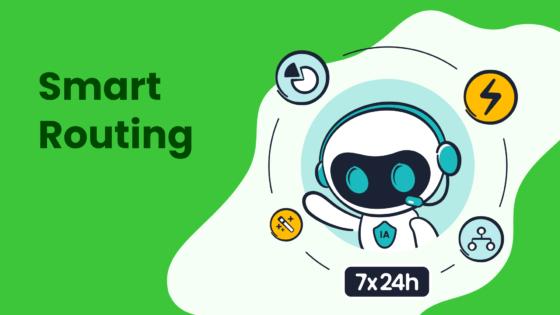
Sobot’s Voice/Call Center enhances this process with advanced analytics and real-time monitoring. These features empower managers to deliver personalized coaching, improving agent performance and customer interactions. By leveraging analytics, you can ensure your team consistently delivers high-quality service.
Foster a Transparent and Supportive Culture
A transparent and supportive culture is essential for the success of any call center. When agents feel valued and supported, they are more likely to perform at their best. Transparency in monitoring practices builds trust and encourages collaboration. For example, involving agents in creating evaluation criteria ensures fairness and boosts morale.
Investing in employee well-being also yields significant benefits. A call center that implemented a mental health program, including on-site counseling and stress management workshops, saw a 35% decrease in absenteeism. This improvement led to higher customer satisfaction and loyalty. Additionally, fostering a healthy workplace culture can increase productivity by 20% and reduce turnover by up to 30%.
Sobot’s solutions, such as real-time feedback and performance dashboards, promote transparency by allowing agents to track their progress. These tools create an environment where agents feel empowered to improve, leading to better customer interactions and overall success.
Regularly Update Monitoring Metrics
Updating monitoring metrics regularly ensures your call center adapts to changing customer needs and industry trends. Metrics like First Call Resolution (FCR) and Average Handle Time (AHT) should be reviewed periodically to maintain relevance. For instance, monitoring scores over time highlights areas for coaching and skill improvement, helping agents deliver consistently high-quality service.
Collecting customer feedback also plays a vital role. It demonstrates your commitment to enhancing the customer experience and identifies necessary changes to improve performance. Using the right technology, such as Sobot’s Voice/Call Center, simplifies tracking and reporting key metrics. This transforms raw data into actionable insights, enabling managers to make informed decisions.
A significant 72% of call center managers rely on random selection for call monitoring, which can lead to skewed assessments. Evaluating a representative sample of calls ensures accurate insights into agent performance. By updating metrics and leveraging advanced tools, you can optimize operations and achieve long-term success.
Use Real-Time Feedback to Enhance Agent Performance
Real-time feedback is a game-changer for improving agent performance in call center call monitoring. It allows you to address issues as they arise, ensuring agents can adjust their approach immediately. For example, if an agent struggles with objection handling, real-time monitoring tools can provide prompts during the call. This instant guidance helps agents refine their skills on the spot, leading to better customer interactions.
Timely feedback also accelerates learning. Agents who receive immediate corrections during calls develop proficiency faster. Real-time monitoring tools, like those offered by Sobot's Voice/Call Center, combine live feedback with post-call analysis. This dual approach maximizes learning opportunities and ensures continuous improvement. For instance, AI-powered tools can flag unusual call patterns, prompting deeper analysis and targeted coaching.
The benefits of real-time feedback extend beyond individual agents. It enhances overall call center efficiency by reducing errors and improving service delivery. Managers can use real-time data to identify trends and implement strategic changes. This proactive approach ensures your team consistently delivers high-quality service, meeting customer expectations effectively.
| Evidence Type | Description |
|---|---|
| Real-Time Feedback Integration | Immediate feedback during calls combined with post-call analysis maximizes learning opportunities. |
| Enhanced Technological Framework | AI tools flag unusual call patterns for deeper analysis, improving agent performance. |
| Holistic Performance Management | Combines real-time and post-call insights for strategic decision-making and performance tuning. |
By leveraging real-time feedback, you empower your agents to perform at their best. Tools like Sobot's Voice/Call Center provide the technological framework needed to implement this effectively. With features such as real-time monitoring and AI-driven analytics, you can ensure your team remains agile and responsive to customer needs.
Integrate Sobot Voice/Call Center with Other Tools
Integrating your call center call monitoring software with other tools is essential for streamlining operations and enhancing agent performance. A unified system allows agents to access all necessary information in one place, reducing the time spent switching between platforms. This improves efficiency and ensures smoother customer interactions.
Sobot's Voice/Call Center excels in integration capabilities. It seamlessly connects with CRM systems, ticketing platforms, and other business tools. For example, integrating with a CRM system enables agents to view customer histories during calls. This context allows them to provide personalized solutions, improving customer satisfaction. Additionally, Sobot's platform supports global telephony contacts, ensuring consistent service across regions.
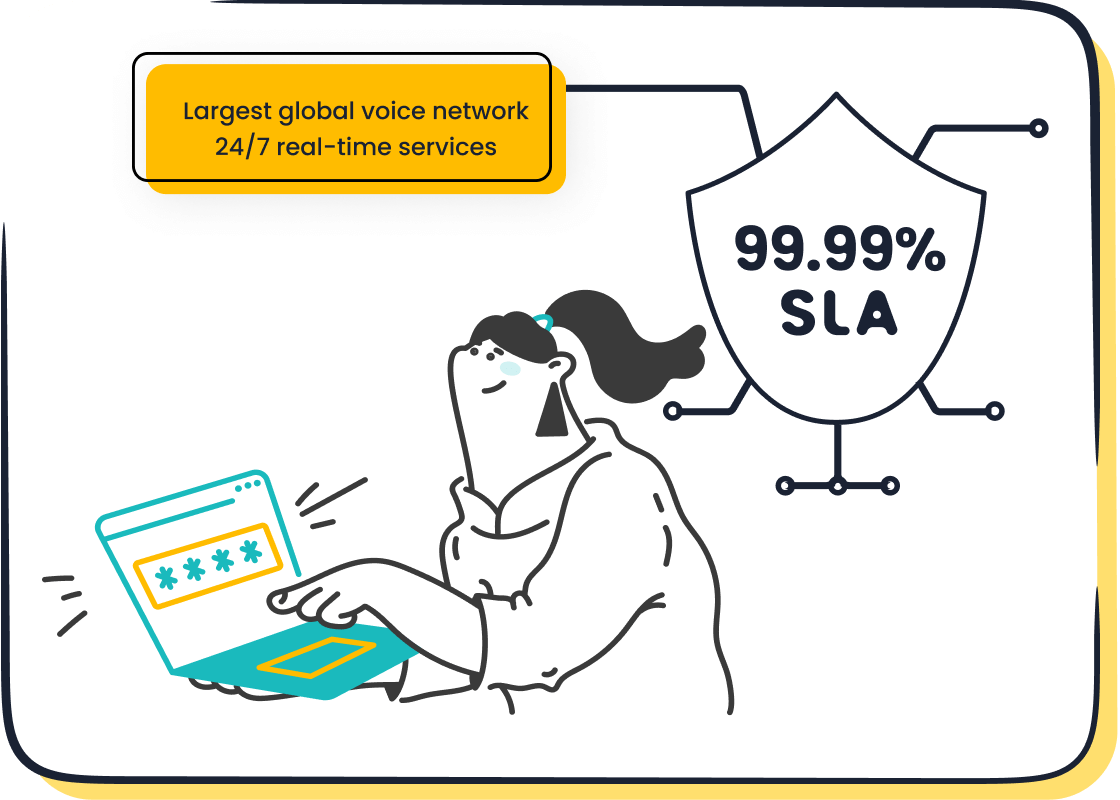
Integration also enhances data analysis. By combining call center monitoring data with insights from other tools, you gain a comprehensive view of your operations. This holistic approach helps you identify trends, optimize workflows, and make informed decisions. For instance, integrating Sobot's Voice/Call Center with an analytics platform can reveal patterns in call volume, enabling better resource allocation.
| Integration Benefits | Description |
|---|---|
| Unified Workspace | Reduces time spent switching between platforms, improving efficiency. |
| Enhanced Customer Context | Provides agents with access to customer histories for personalized service. |
| Comprehensive Data Analysis | Combines insights from multiple tools for better decision-making. |
By integrating Sobot's Voice/Call Center with your existing tools, you create a seamless ecosystem that supports both agents and managers. This integration not only improves operational efficiency but also enhances the quality of customer interactions, ensuring your call center remains competitive and effective.
Overcoming Common Challenges in Call Center Monitoring

Addressing Resistance from Agents
Resistance from agents often arises when they perceive monitoring as invasive or punitive. To overcome this, you should focus on creating a transparent and collaborative environment. Clearly explain the purpose of monitoring and how it benefits both agents and customers. For example, a transparent monitoring process reduces anxiety by eliminating uncertainty. It positions monitoring as a tool for development rather than surveillance. Reframing feedback sessions as collaborative discussions fosters a culture of continuous learning and improvement.
| Strategy | Impact on Agents |
|---|---|
| Transparent Monitoring Process | Reduces anxiety and positions monitoring as a development tool. |
| Reframing Feedback Sessions | Encourages collaboration and continuous improvement. |
Involving agents in setting evaluation criteria also helps. When agents feel included, they are more likely to embrace monitoring as a positive aspect of their role. This approach not only improves agent performance but also enhances the quality of customer interactions.
Ensuring Data Privacy and Compliance
Data privacy is a critical concern in call center monitoring. Call centers often handle sensitive customer information, making them prime targets for cyberattacks. For instance, 51% of respondents in the financial services industry identified call centers as the main channel for account-take-over attacks. Additionally, 30% of agents reported having access to customers’ payment card information even when not on calls.
To address these risks, you must implement robust security measures. Adhering to regulations like the FDCPA, GLBA, and Dodd-Frank is essential. Non-compliance can result in severe penalties, such as a $250 million fine for a financial institution under Dodd-Frank.
| Regulation | Penalty Type | Amount | Example |
|---|---|---|---|
| FDCPA | Settlement | $267,000 | Debt collection agency settled violations. |
| Recording Consent | Per Violation | Up to $2,500 | Company fined $7.4 million for non-compliance. |
| Dodd-Frank | Individual Penalty | Up to $1M per day | Financial institution fined $250 million. |
| GLBA | Per Violation | Up to $100,000 | Institution paid $85 million for data safeguarding failure. |
Regular audits and employee training on data handling protocols further ensure compliance. These steps protect customer data and build trust in your call center operations.
Avoiding Over-Monitoring and Micromanagement
Over-monitoring can harm agent morale and productivity. Research shows that 56% of employees subjected to electronic monitoring report feeling tense or stressed, compared to 40% of those who are not monitored. This highlights the psychological risks of excessive oversight, such as increased stress and diminished trust.
Invasive monitoring signals a lack of trust in agents’ abilities, fostering resentment and creating a toxic work environment. To avoid this, focus on balanced monitoring practices. Use monitoring tools to provide constructive feedback and support rather than constant evaluation. For example, real-time feedback can guide agents during calls without making them feel micromanaged.
Encourage a supportive culture where agents view monitoring as a resource for growth. This approach not only reduces stress but also improves overall performance and the quality of customer interactions.
Managing Technical Issues During Implementation
Technical issues during the implementation of call center monitoring software can disrupt operations and delay progress. Addressing these challenges effectively ensures a smooth transition and minimizes downtime. You can follow a structured approach to overcome common technical hurdles.
Start by identifying potential issues early. Conduct a thorough assessment of your existing systems to ensure compatibility with the new software. For example, integrating call center monitoring tools with your CRM or ticketing systems requires seamless data flow. Sobot’s Voice/Call Center simplifies this process with its integration capabilities, reducing the risk of technical conflicts.
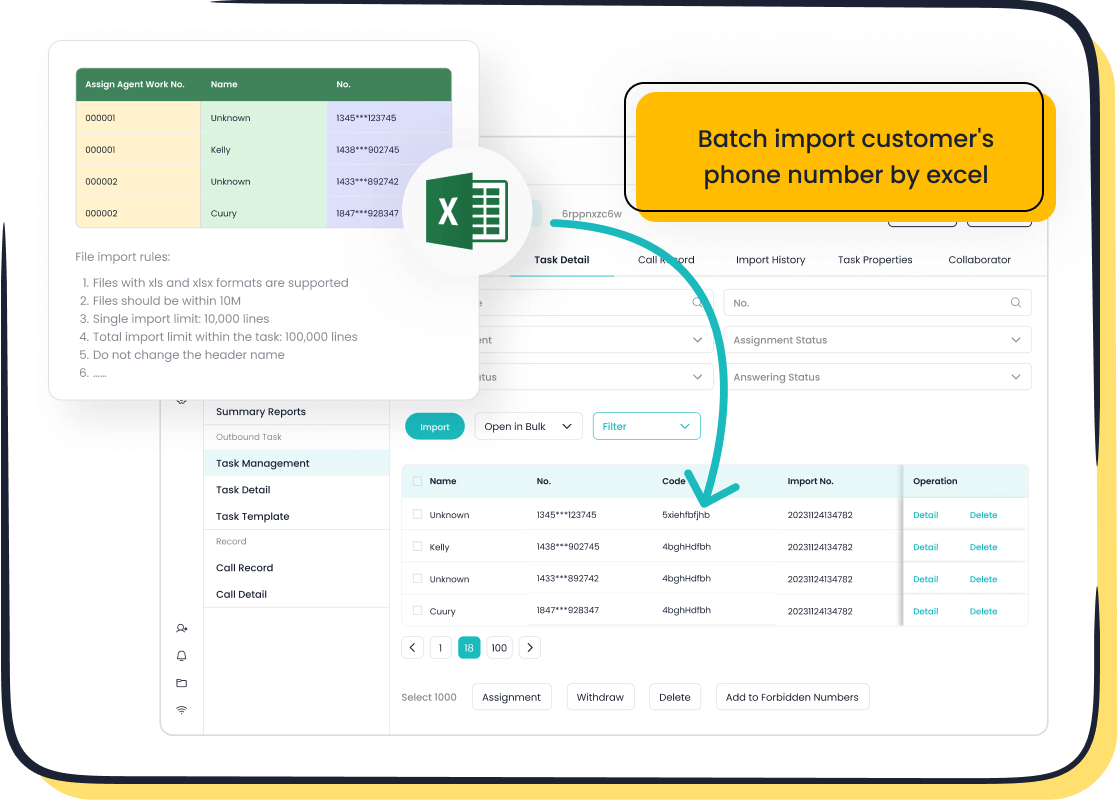
Monitoring key performance metrics during implementation helps you track progress and identify bottlenecks. Metrics like call transfer rate, average handle time (AHT), and adherence to schedule provide valuable insights. For instance:
| Metric | Description | Improvement Tips |
|---|---|---|
| Call Transfer Rate | Percentage of calls transferred between agents. | - Establish effective call routing. - Broaden agent training. |
| Average Handle Time (AHT) | Average time spent on a call, including talk and after-call tasks. | - Provide troubleshooting scripts. - Automate repetitive tasks. |
| Adherence to Schedule | Measures how closely agents follow their assigned schedules. | - Use scheduling tools for balanced shifts. |
| Customer Satisfaction Ratings | Feedback collected from customers post-call to evaluate service quality. | - Regularly review feedback to address issues and improve efficiency. |
You should also prioritize training for agents and managers. Equip them with troubleshooting guides and ensure they understand the software’s features. This reduces errors and builds confidence in handling technical challenges.
Finally, maintain open communication with your software provider. Regular updates and prompt support from providers like Sobot ensure system stability and quick resolution of technical issues. By addressing these challenges proactively, you can ensure your call center monitoring software operates efficiently and enhances customer interactions.
Tip: Always test the software in a controlled environment before full deployment. This helps identify and resolve technical issues without affecting live operations.
Actionable Tips for Long-Term Success
Continuously Evaluate Software Effectiveness
Regular evaluation of your call center monitoring software ensures it continues to meet your business needs. Monitoring tools should adapt to evolving customer expectations and operational goals. For example, systems like Cogito analyze interactions and provide real-time feedback to improve agent performance. Supervisors also receive alerts about potential issues, enabling immediate action.
To maintain effectiveness, assess performance metrics such as customer experience scores and resolution rates. Regularly review these metrics to identify areas for improvement. This approach ensures your software remains aligned with your objectives and delivers optimal results.
| Metric | Description |
|---|---|
| Customer Satisfaction (CSAT) | Measures how happy customers are with service. |
| Net Promoter Score (NPS) | Indicates customers' likelihood to recommend. |
| First Contact Resolution (FCR) | Assesses if issues are resolved in one interaction. |
| Average Handle Time (AHT) | Tracks the time taken to resolve customer issues. |
| Queue Times | Evaluates if customers are waiting too long. |
| Customer Lifetime Value (CLV) | Measures the long-term value of customer relationships. |
By continuously evaluating these metrics, you can ensure your monitoring software supports both agent performance and customer satisfaction.
Encourage Open Communication Across Teams
Open communication fosters collaboration and improves productivity in your call center. When team roles and expectations are clear, agents feel more engaged. Research shows that 4 out of 5 factors driving employee engagement relate to communication, such as ongoing conversations and a focus on strengths.
Encourage feedback from agents about the monitoring process. This creates a sense of ownership and helps identify areas for improvement. Studies also reveal that only 7% of U.S. workers believe communication is accurate, highlighting the need for better practices. Providing valid feedback and fostering peer support can significantly enhance team dynamics.
Tip: Regular team meetings and one-on-one sessions with agents can strengthen communication and build trust.
A transparent communication model not only improves agent morale but also enhances the quality of customer interactions.
Stay Updated on Industry Trends and Innovations
Staying informed about industry trends ensures your call center remains competitive. The rise of AI technologies, such as conversational intelligence and speech analytics, is transforming call center operations. These tools provide deeper insights into customer interactions and improve efficiency.
Cloud-based solutions are also gaining popularity, with 96% of companies adopting public cloud services. These platforms offer flexibility and security, making them ideal for modern call centers. Additionally, the demand for personalized customer experiences continues to grow. Over 67% of customers now prefer self-service options, emphasizing the need for innovative solutions.
To stay ahead, explore advancements like ethical AI deployment and mobile app optimization. For example, 50.9% of shoppers use mobile apps for purchases, highlighting the importance of integrating app technology into your call center strategy.
By embracing these trends, you can enhance your monitoring capabilities and deliver exceptional customer experiences.

Utilize Sobot's Voice/Call Center for Scalable Solutions
Sobot's Voice/Call Center offers a scalable solution designed to grow with your business. Whether you manage a small team or a global operation, this platform ensures seamless communication and efficient customer service. Its advanced features, such as intelligent IVR, AI-powered voicebots, and global telephony support, make it a reliable choice for businesses aiming to enhance their call center operations.
One of the key advantages of Sobot's Voice/Call Center is its ability to handle increasing customer demands without compromising service quality. The platform has achieved remarkable results, including a 20% reduction in inbound discussion volume and a 96%+ customer satisfaction score. Additionally, its AI platform delivers 80% correct answers, with 95% of customers expressing satisfaction with AI-assisted interactions. These metrics highlight the platform's efficiency and customer-centric approach.
| Metric | Value |
|---|---|
| Reduction in inbound discussion | 20% |
| Customer satisfaction score | 96%+ |
| Correct answers by AI platform | 80% |
| Customer satisfaction with AI | 95% |
| Self-service question resolution | 22.2% |
| Overall CSAT score | 97% |
| Problem resolution rate | 85% |
| Customer happiness rate | 99% |
| Increase in sign-off rate | 35% |
| Increase in COD collection rate | 40% |
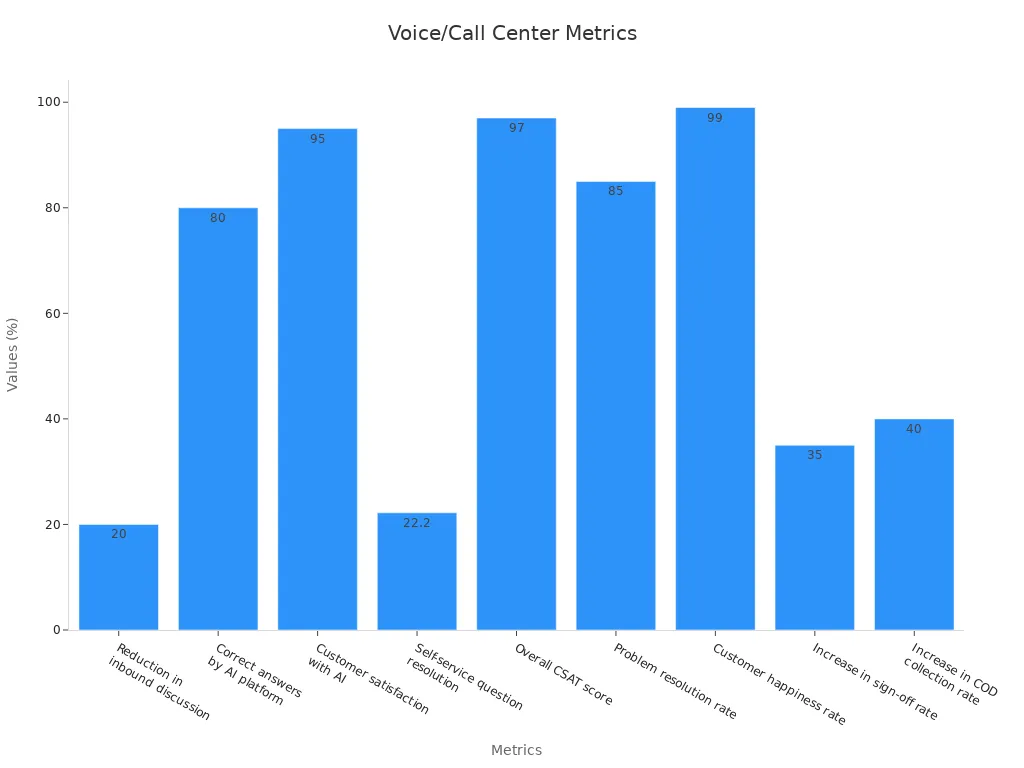
The platform also empowers businesses to resolve 22.2% of inquiries through self-service, achieving a 97% CSAT score. With an 85% problem resolution rate and a 99% customer happiness rate, Sobot ensures your customers receive timely and effective support. Furthermore, businesses using Sobot have reported a 35% increase in sign-off rates and a 40% improvement in COD collection rates.
By integrating Sobot's Voice/Call Center with your existing tools, you can create a unified workspace that enhances agent productivity and customer satisfaction. Its scalability, combined with advanced analytics and AI capabilities, makes it an ideal solution for businesses looking to optimize their call center operations. Explore how Sobot can transform your customer service experience and drive long-term success.
Call center monitoring software transforms your operations by improving customer satisfaction, agent performance, and efficiency. Following best practices ensures you address challenges proactively and achieve measurable success. For example:
- Enhanced customer experience through better service quality.
- Improved agent performance with tailored coaching.
- Operational efficiency by resolving bottlenecks.
| Metric | Impact on Business Outcomes |
|---|---|
| Customer Satisfaction | Increased satisfaction leads to higher retention rates |
| Operational Efficiency | Reduces costs and improves service delivery |
| Agent Performance | Enhances training and coaching opportunities |
Sobot's Voice/Call Center offers advanced tools like real-time monitoring and AI-powered analytics. These features help you optimize operations and deliver exceptional service. Explore how Sobot can elevate your call center success.
FAQ
What is call center monitoring software?
Call center monitoring software tracks and evaluates customer interactions. It helps you analyze call quality, agent performance, and customer satisfaction. Tools like Sobot's Voice/Call Center provide real-time monitoring, analytics, and feedback to improve service quality and operational efficiency.
How does real-time feedback improve agent performance?
Real-time feedback allows you to address issues during calls. It helps agents adjust their approach immediately, improving customer interactions. Sobot's tools provide live monitoring and AI-driven insights, ensuring agents receive actionable guidance for better performance.
Can Sobot's Voice/Call Center integrate with my existing systems?
Yes, Sobot's Voice/Call Center integrates seamlessly with CRM systems, ticketing platforms, and other tools. This ensures a unified workspace for agents, enabling them to access customer data and provide personalized service efficiently.
How does call center monitoring software ensure data security?
Call center monitoring software uses encryption and compliance protocols to protect sensitive data. Sobot's platform adheres to global standards, ensuring secure data transfer and storage. Regular audits and updates further enhance security.
Why is updating monitoring metrics important?
Updating metrics ensures your call center adapts to changing customer needs. It helps you track relevant KPIs like First Call Resolution (FCR) and Average Handle Time (AHT). Sobot's tools simplify this process, providing actionable insights for continuous improvement.
See Also
Enhancing Call Center Efficiency Through Effective Monitoring Techniques
Essential Insights on Quality Assurance Tools for Call Centers
Top Strategies for Effective Call Center Quality Management
Comprehensive Overview of Omnichannel Solutions for Call Centers
